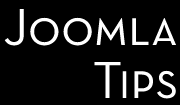threat
-
Baba Yaga
Baba Yaga is an entity that haunts the dreams of children and a common threat that parents use when their children misbehave in Slavic countries across Eastern Europe.
But in the world of malware, BabaYaga is a form of malware that can update itself, use antivirus functionality and more. Much like the mythical creature, BabaYaga malware has the potential to haunt Joomla/WordPress or, in fact any PHP site administrators and IT support staff.
-
Botnet
The term botnet refers to a group of computers (sometimes called zombies) that have been infected with malware to perform tasks for whomever distributed said threat. This individual, or organization, controls the botnet by sending instructions to the zombies from one or more Command & Control (C&C) servers. This is one of most used techniques to carry out brute force attacks against servers - or group of servers.
-
Clean Hacked Website Files
By comparing infected files with known good files (from official sources or reliably clean backups) you can identify and remove malicious changes.
Caution
To manually remove a malware infection from your Joomla! files:
-
Log into your server via SFTP or SSH.
-
Create a backup of the site files before making changes.
-
Search your files for reference to malicious domains or payloads you noted.
-
Identify recently changed files and confirm whether they are legitimate.
-
Review files flagged by the diff command during the core file integrity check.
-
Restore or compare suspicious files with clean backups or official sources.
-
Remove any suspicious or unfamiliar code from your custom files.
-
Test to verify the site is still operational after changes.
If you can't find the malicious content, try searching the web for malicious content, payloads, and domain names that you found in the first step. Chances are that someone else has already figured out how those domain names are involved in the hack you are attempting to clean.
Diff tools to compare suspicious files with known-good copies:
-
-
Cleaned your site? Fix Malware warnings too
You have done a great job by cleaning your recently hacked file? Excellent, but you not finished yet!
If you were blacklisted by Google, McAfee, Yandex (or any other web spam authorities), your site is showing various malware warnings to your visitors, wich can be a big turn down factor. Luckily you can request a review after the hack has been fixed.
Be sure your site is clean before requesting a review!
-
Clickjacking
Is a malicious technique of tricking a Web user into clicking on something different from what the user perceives they are clicking on, thus potentially revealing confidential information or taking control of their computer while clicking on seemingly innocuous web pages. On a clickjacked page, the attackers load another page over it in a transparent layer, in most cases using HTML FRAME based techniques. The users think that they are clicking the buttons they are actually seeing, while they are in fact performing actions on the hidden page. This way the attackers can trick users into performing actions which the users never intended. There is no way of tracing such actions to the attackers later, as the users would have been genuinely authenticated on the hidden page.
